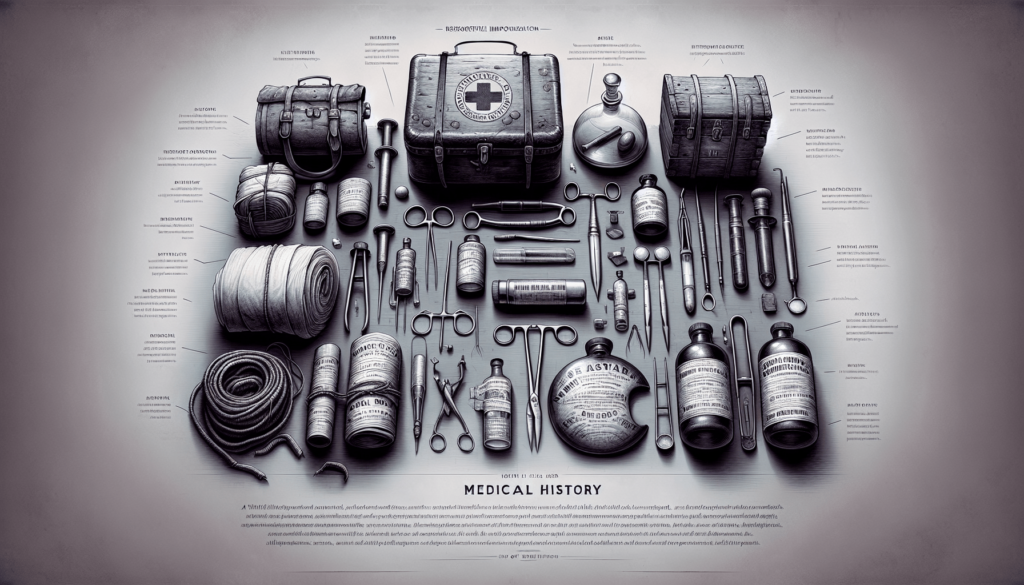Embark on a journey through time as you explore the historical treasures awaiting you at the National Museum of Civil War Medicine. Nestled in the heart of Frederick, Maryland, this museum offers an intriguing glimpse into the medical practices of the past, shedding light on the significant advancements made during a turbulent period in American history. Whether you’re a history buff, a medical enthusiast, or simply looking for a unique outing, the National Museum of Civil War Medicine promises an enriching experience, all within the inviting and picturesque setting of Frederick and its surrounding areas. Get ready to immerse yourself in a captivating exploration that speaks volumes of the resilience and innovation of those who came before us.

The Genesis of the National Museum of Civil War Medicine
The National Museum of Civil War Medicine is a historically rich treasure nestled in the heart of Frederick, Maryland. This museum is more than just a collection of artifacts; it’s a comprehensive dive into the medical practices and innovations that formed during one of America’s most tumultuous periods.
Establishment and Location
Situated in Frederick, the museum was founded to preserve and interpret the medical history of the Civil War. Frederick’s strategic location made it an ideal spot, not just for its historical significance during the war but also for its accessibility to visitors today.
Mission and Vision
The museum’s mission is clear: to educate the public about the innovative medical practices that were developed or refined during the Civil War and their lasting impact on modern medicine. Its vision is to serve as a leading resource for this specialized knowledge, offering insights into the human side of civil war history.
The Role of Frederick, Maryland in Civil War Medicine
Frederick plays a pivotal role in civil war medicine, primarily due to its proximity to major battlefields. Its buildings and churches were converted into hospitals, making it a hub for medical care and innovation during the war. This rich history makes Frederick the perfect location for the museum.
Exhibits Overview
The museum offers a detailed look into Civil War medicine through various exhibits, showcasing the evolution of medical practices and equipment during this period.
Permanent Exhibits
The permanent exhibits at the museum are comprehensive. They cover everything from surgical techniques developed during the war to the roles of key figures in improving medical care for soldiers. These exhibits provide a deep dive into how these practices have evolved.
Traveling and Temporary Exhibits
In addition to its permanent collection, the museum frequently hosts traveling and temporary exhibits. These exhibits often focus on specialized aspects of Civil War medicine or highlight new research in the field, making each visit unique.
The Highlights of the Collection
Among the highlights of the museum’s collection are original surgical kits, medicines, and equipment used on the battlefield. The personal stories attached to these items bring the history of Civil War medicine to life for visitors.
The Importance of Medical Innovations During the Civil War
The Civil War was a catalyst for medical innovations, many of which have had a lasting impact on how medical care is provided today.
Anesthesia and Pain Management
During the Civil War, the use of anesthesia became more widespread, allowing surgeons to perform more complex operations with the patient unconscious, significantly reducing pain and suffering.
Surgical Techniques and Amputations
The war necessitated rapid advancements in surgical techniques, particularly in amputations, which were common due to the devastating injuries caused by gunfire and cannonballs. These techniques laid the groundwork for modern surgery.
Field Hospitals and the Sanitary Commission
The development of field hospitals and the establishment of the Sanitary Commission, which aimed to improve hygiene practices and prevent disease, were significant innovations in medical care during the Civil War.
Notable Figures in Civil War Medicine
Several individuals made significant contributions to medical practices during the Civil War, leaving a lasting legacy.
Clara Barton and the Red Cross
Clara Barton, known as the “Angel of the Battlefield,” went on to found the American Red Cross. Her efforts in organizing medical supplies and aiding soldiers on the battlefield were groundbreaking.
Dr. Jonathan Letterman’s Triaging System
Dr. Jonathan Letterman developed a triage system that is still the basis of modern emergency medicine. His system for managing and evacuating the wounded saved countless lives.
Surgeon General William Hammond’s Contributions
Surgeon General William Hammond made significant advancements in the medical field, including standardizing medical supplies and improving hospital conditions, which greatly benefited soldiers.

Medical Equipment and Pharmaceuticals
The Civil War era saw rapid advancements in medical equipment and pharmaceuticals, many of which are the foundation of today’s medical practices.
Surgical Tools and Innovations
The war drove innovation in surgical tools, with many new instruments developed to address the specific challenges of battlefield medicine.
Medicines and Anesthetics
The demand for effective pain management and treatment led to advancements in medicines and anesthetics, some of which are still used in modern medicine.
Prosthetics and Rehabilitation Aids
The high number of amputations during the war spurred advancements in prosthetics and rehabilitation aids, improving the quality of life for veterans.
The Role of Ambulance Corps and Transportation
The Civil War also saw significant improvements in the transportation of the injured, which was critical to their survival.
Evolution of Battlefield Evacuation
The evolution of battlefield evacuation practices, including the development of the ambulance corps, greatly improved the chances of survival for injured soldiers.
Ambulance Wagons and Railroads
The use of ambulance wagons and railroads to transport the wounded revolutionized battlefield medicine, allowing for quicker, more organized care.
Letterman’s Ambulance Corps Model
Dr. Jonathan Letterman’s ambulance corps model set the standard for military medical evacuation, emphasizing efficiency and rapid care, principles still in use today.

Nursing and the Role of Women
The Civil War marked a turning point in the role of women in medicine, with many stepping into roles as nurses and caregivers.
Professionalizing the Field of Nursing
The war propelled the professionalization of nursing, establishing it as a vital component of medical care and laying the groundwork for nursing as a profession.
Prominent Female Nurses and Their Contributions
Many women, like Clara Barton and Dorothea Dix, made significant contributions to medical care during the war, often under challenging circumstances.
Challenges Faced by Women in the Medical Field
Despite their contributions, women faced numerous challenges and prejudices in the medical field, fighting for recognition and respect.
Disease and Conditions in the Camps
The close quarters and poor sanitation in military camps led to outbreaks of disease, which proved to be as deadly as battlefield injuries.
Common Diseases and Their Treatments
Diseases like dysentery, typhoid, and malaria were common, and the museum explores the treatments used at the time, some of which laid the foundation for modern medical practices.
Nutrition and its Impact on Soldier Health
The museum also looks at the role of nutrition in soldier health, highlighting the challenges of providing a balanced diet in the field.
Hygiene Practices and Their Evolution
The evolution of hygiene practices during the Civil War, driven by the need to combat disease in the camps, is a key focus of the museum.

Educational Programs and Public Outreach
The museum is committed to educating the public about Civil War medicine through a variety of programs and initiatives.
Workshops and Lectures for All Ages
The museum offers workshops and lectures on various aspects of Civil War medicine, designed to engage people of all ages.
Living History and Reenactments
Through living history presentations and reenactments, visitors can get a firsthand look at medical practices of the era, bringing history to life.
Collaborations with Schools and Universities
The museum collaborates with schools and universities to provide educational resources and programs, furthering its mission of education and outreach.
Engagement and Support
The museum thrives on community engagement and support, offering several ways for the public to get involved.
Volunteering and Membership Programs
Volunteering and membership programs provide opportunities for individuals to contribute to the museum’s mission, whether through time or financial support.
Donating Artifacts and Funding
The museum also welcomes the donation of artifacts and funding, ensuring that it can continue to preserve and share this important aspect of history.
Community and Educational Support
Through its educational programs, the museum has become a vital part of the community, providing valuable resources and learning opportunities for visitors of all ages.
The National Museum of Civil War Medicine is more than just a museum; it’s a journey into the heart of American history, showcasing the innovations, challenges, and legacies of Civil War medicine. Whether you’re a history buff, a medical professional, or just curious, the museum offers insights and stories that are sure to engage and inspire.

